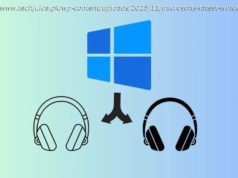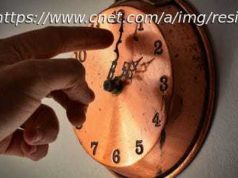What advice do I have for graduate students? Tl;dr: It’s okay to get help
Alexander Diaz-Lopez kindly invited me to do an interview for the graduate student section of the Notices of the American Mathematical Society. He asked me about my path to my career, what I would be if I weren’t a mathematician, and what advice I have for graduate students. Although it feels a bit immodest to share this interview here, I hope it helps other graduate students who struggle feel like they aren’t alone and that they can have successful careers in mathematics.
This interview first appeared in the Notices of the American Mathematical Society, volume 64, number 9 (October 2017). You can read the original here (pdf). This month’s issue also has articles about a formula called the efficiency gap as a measure of gerrymandering and Euphemia Lofton Haynes, the first African American woman to get a Ph. D. in math. You can check out the full issue here.
Alexander Diaz-Lopez: When/how did you know you wanted to be a mathematician?
Evelyn Lamb: I did well in math classes going through school, and I even did (and enjoyed) MathCounts in middle school, but math never really grabbed me. I thought of math as rote and computational. You memorize a formula, plug in the numbers, and chug through to get the right answer. MathCounts wasn’t really like that, but I didn’t see a connection between the fun puzzles we did there and the math from my math classes.
I had the advantage of going to the Texas Academy of Math and Science for my last two years of high school. It’s a residential program on the University of North Texas campus, so I graduated high school with about 70 hours of college credit. That gave me the flexibility to meander in college and still be able to graduate in 4 years.
I went to Baylor University wanting a career as a researcher in nutrition or pharmacology, and I also loved music and had a viola performance scholarship. I technically entered college as a biochemistry and church music double major, although I pretty quickly decided the church music program there wasn’t a good fit for me. After a couple years of slogging through organic chemistry and biochemistry classes, I realized that wasn’t right for me either. Thanks to my TAMS credits, I was only a few classes away from a math minor. I figured that wouldn’t be a bad thing to complete no matter what my major ended up being. I liked my linear algebra class, but what really converted me was an introduction to proofs class I took in the fall of my junior year. It completely changed the way I thought about math. Looking back, I’m tempted to say that two weeks into this one math class, my future was decided, but in reality there was a lot more back and forth about what I wanted to do because I was also so involved in music. At that point, I played viola and carillon (the giant clock tower bell instrument), I was a soprano section leader in a local church choir, and I absolutely loved my music theory classes. But I was concerned that I didn’t really want to practice enough to make it as a professional performer, wasn’t interested in teaching private lessons, and didn’t have much faith in my employability as a music theorist. I had a lot more confidence in my employability with a math degree, so that’s what I did.
Diaz-Lopez: Who encouraged or inspired you?
Lamb: My family has always been very encouraging of all my endeavors, whether it was science (my first career goal was to be a herpetologist because I loved snakes), music, sewing, or anything else that caught my fancy. I was lucky to be born into a geeky family, and even though I had those teenage years of feeling like nobody understood me, in reality I’ve been fortunate at every stage in my life to have wonderful friends who love me for, not in spite of, my geekiness. I’m not going to name individual friends or family members because there are too many to mention!
I had a lot of good teachers in pretty much every subject who encouraged me throughout my schooling. Mathematically, three of my Baylor professors really went out of their way to support me once I decided to do math. Brian Raines, David Ryden, and Paul Hagelstein wrote my graduate school recommendation letters and spent a lot of time listening to me think out loud about what direction I wanted to go in my career, how I should prepare for graduate school, and where I should apply. I didn’t always take their advice, but it was important that they were so encouraging of me.
For writing, my mentor at Scientific American, Robin Lloyd, was just the person I needed to start my career. She helped and continues to help me be a better science writer. Julie Rehmeyer is another science writer with a math background who has been both an inspiration and an encourager. You should get her to do one of these interviews!
My spouse Jon Chaika is now my biggest fan and supporter. I bounce a lot of ideas off of him, and when I’m nervous about something I’m trying, he’s great at listening to my concerns, talking through problems with me, and encouraging me to try new things.
Diaz-Lopez: You finished your PhD, then worked in academia, and now you are a full-time freelance writer. What motivated you to make these career choices?
Lamb: In 2012 right after I got my Ph. D., I had the opportunity to work for Scientific American through a AAAS-AMS Mass Media Fellowship. The AAAS (American Association for the Advancement of Science) runs this program, in which graduate students in the sciences work at various media outlets for the summer, and the AMS sponsors one of the fellowships every year. I had heard about the program for a few years and always thought it would be fun to see how people wrote about math and science for a general audience. The application deadline was at an inconvenient time, so I ended up not applying until the last year I was eligible. I almost missed the deadline that year as well. My spouse waited in the long line at the post office on the afternoon of the mailing deadline while I went and got the right size envelope so I would be able to get it postmarked in time. (Yes, the application had to be mailed! In 2012!) Somehow one of the recommendation letters didn’t end up getting to them on schedule, but they let the writer resubmit it. Whew! [I wrote about the fellowship for the Notices (pdf) and Roots of Unity.]
The fellowship was a revelation. Graduate school had really been tough for me, and I kind of felt like I was the person in the world who was the absolute worst at math. I was the infimum! Working at Scientific American helped me gain confidence, not because I figured out that there were people in the world worse than I was at math, but because I realized I had something to offer with my mathematical background, creativity, and communication skills. During the fellowship, I wrote about math in addition to physics, biology, chemistry, engineering, materials science, and health. Robin Lloyd and the other editors I worked with were incredibly generous with their time, feedback, and encouragement. At the end of the summer I really felt like I could do this as a career. Before the fellowship, I had no idea how big the science writing world was and that there was room for someone like me in it.
But I had a job lined up already. My spouse got a tenure-track job at the University of Utah, and they had thrown a postdoc for me into the deal. (That’s selling myself a bit short. I had been on their short list for a postdoc a year or two prior, and it was a good fit for my research area.) We got the job offers in the spring of 2012, before I did the fellowship at Scientific American, but we wouldn’t be starting until fall 2013 so he could finish his postdoc. In the intervening year, I did some freelance math writing for Scientific American and a few other places and started my Scientific American blog Roots of Unity. I decided that I wanted to give the postdoc a try and do some blogging and writing on the side.
I loved my students and colleagues at the U, but in the end I felt like I wasn’t able to do what I wanted to with my writing because of the energy I was spending on teaching and research. I was having some success and getting positive feedback about my writing, and it was more fun and fulfilling for me than my other work, so I made the emotionally fraught decision to leave academia and do freelance writing full-time. I felt awful and like a failure for a long time while I was making the decision, but the relief I felt when I finally decided and told my chair about it made me pretty confident that it was the right call. So far, I’d say it was. I’m still at the beginning of this career, though. Ask me again in 5-10 years.
Diaz-Lopez: How would you describe your current work?
Lamb: I’m a freelance math and science writer, which means I’m both self-employed and work for many employers. Currently my ongoing gigs are my Scientific American blog Roots of Unity and the Blog on Math Blogs for the AMS, which I co-write with Duquesne University mathematician Anna Haensch. I’ve also written for other media outlets, including Slate, Nautilus, Smithsonian Magazine, Nature News, New Scientist, Undark, and the Association for Women in Mathematics newsletter. This year I’ve been experimenting with an email newsletter for people who want to keep up with my writing. You can find it at tinyletter.com/evelynjlamb .
Roots of Unity is kind of my playground. I can write about whatever I want in whatever way I want. That’s where I can experiment with what topics and type of writing work well and make me feel satisfied. I can make goofy math quizzes or write about the intersection of politics and mathematicians or share my stream of consciousness thoughts about an interesting tiling I saw on the ground. The Blog on Math Blogs is about sharing good blog and online math content that will be of interest to AMS members. In other publications I tend to write more journalistically, though sometimes I write opinion pieces for them as well. Each outlet has a little bit of a different voice and focus, and it’s fun (though also time-consuming and sometimes frustrating) to try to figure out the best places for different story ideas. Recently I’ve written some articles for middle- and high-school students in Science News for Students and Muse Magazine. Writing for that age is a fun new challenge, and I’m excited to think that my stories might connect kids with parts of math they don’t always see in the classroom.






